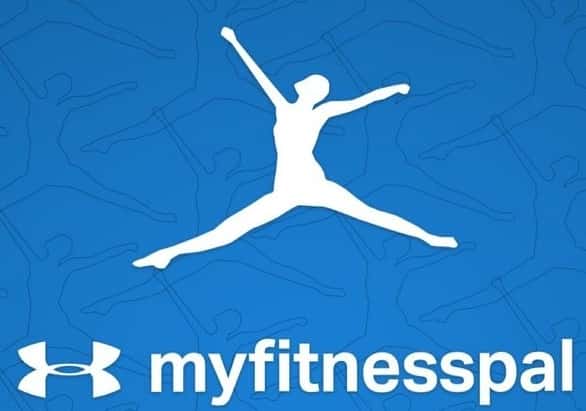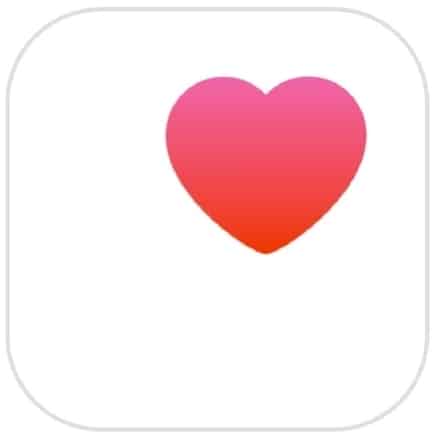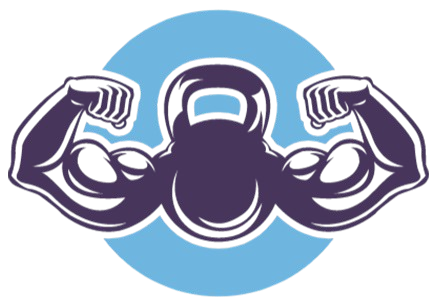Fitpro Income
How To Manage Your Personal Training Clients
So, you’ve been building your client base up for months and you now have a diary that’s nearly full.
It’s great that you are busy, but now the question is
“How do I manage my personal training clients?“.
In this article I will be explaining just how you can stay on top of a busy client base, never double book yourself, and keep on track with all your clients’ training goals and progress.
Ready to get started?
Then let’s go……

Personal trainers make use of diaries, personal organizers, mobile phone apps, and exercise progress cards to keep track of and manage their clients. Keeping clients organized is essential to avoid double booking or missed sessions and losing track of clients’ progress.
How to manage your personal training clients
- Mobile apps
- Diaries
- Mobile phones
- Exercise progress cards
- Tracking payments and sessions with spreadsheets
- Exercise periodisation programmes
- Decide on the hours you will work
- Don’t get greedy
- Plan your day
Most useful mobile apps for PT’s
Ok, I’ll admit it, when I was a personal trainer in my prime, it was in the noughties. There were only a handful of apps that were useful for managing clients around at that time, but that didn’t mean I didn’t use them.
And would I use apps to manage my clients if I were still training people on a daily basis?
You bet I would!
Using apps helps you keep track of tons of different clients without all the hassle of paperwork to store and carry around with you. Although, as you will see later, I am actually a huge fan of the old-school methods.
1. MyFitnessPal
MyFitnessPal is probably my favorite app because it takes all of the hassle and complication out of food diaries.
As a personal trainer, you will understand that nutrition is an integral part of any training program. If the diet is wrong, then it doesn’t matter what you do with your client, they won’t make progress.
MyFitnessPal allows your clients to easily list and put their food for each day into a handy diary format that breaks down the calories, macro and micro nutrition so you can keep your clients accountable for their actions.
I have also been using this for my own food diaries almost daily for about seven years, it’s pretty addictive if you like being accurate on these types of things.

myfitnesspal
2. iPhone Health
If you own an iPhone, this app is already up and running on your phone and totally free.
It may not be the most accurate app or have the most features, however, it is an excellent app for clients that are very new to exercise and don’t want to be overburdened with complicated programs.
For example, if you have a client that is very overweight, they may not need any complicated programs to get themselves started on their fitness journey, they may just need to increase the number of steps they take each day.
iPhone health is the perfect way for them to track the steps they take, the amount of sleep they get, basic nutrition and they can even track improvements made to their mental health.
Some of these aspects require other apps to be installed to use in conjunction with them, and a few require some basic equipment such as pedometers, etc, but you would even find the basic program useful as it comes.

iPhone Health
3. PT Distinction
PT Distinction is a fantastic all-rounder app for personal trainers that want everything they need to be in one place.
It is highly geared towards online training rather than the traditional one-to-one sessions, but there are features that could be used for both.
You are able to fully customize the layout and design of the app, giving you the ability to present it as your own software, which instantly raises your own credibility.
It takes all the content of several apps and puts it into one application by combining, food diaries, workout plans, measurements, progress photos, and meal plans all in one.
If you don’t want the hassle of using several different apps for your clients, this is certainly what I would recommend you try.
I’m particularly impressed with the option to add video demonstrations to each exercise you prescribe for your clients to do.

PT Distinction
The old-school diary method
When I was a fully-fledged PT I used to love using my diary to book in my client’s sessions.
That’s right an actual diary made out of paper!
There was something so satisfying about physically picking up a pencil and writing the client’s name in the time slot and watching the week slowly fill up.
I actually found that because I am somewhat of a completionist, It really motivated me to find as many clients as possible so that I could write more and more names into the diary each week.
If you like the idea of going old-school, buy yourself a small paper diary that you can use to organize your weekly sessions.
I actually found that I was much less likely to double book myself with a paper as physically writing the name in a diary next to a time helped me remember when that client was booked into a session.
Using a mobile phone to manage your clients
Ok, ok, so most of you reading this probably think I am incredibly old-fashioned for even suggesting the idea of using an actual diary.
That’s why I am not going to shy away from suggesting you use your mobile phone for keeping track of and managing your clients’ sessions and workouts.
I actually used my phone all the time during my sessions as I found it to be incredibly convenient to have a list of my client’s exercises, weights and to have my stopwatch on hand to time the rest periods in between sets.
There’s also a massive benefit in the form of apps.
As you will of seen previously, there are a ton of apps that you can download to input all of your clients’ workout sessions, weights, diet plans, everything!
I’m not kidding when I say that only a few years ago, I had all of my clients’ workout sheets in separate folders in a huge pull-out cabinet in the PT office.
Seeing as how far technology has come from that point, it seems foolish to not take advantage of it.
One thing to bear in mind is that you should avoid using your personal diary and contacts for anything to do with your business.
Things can very easily get mixed up if you are booking clients into session slots and booking in events from your personal life too.
You really want to avoid this as it can very easily lead to double-booking yourself, which is something you definitely don’t want.
Using exercise programme cards to monitor progress
When you write out your client’s workouts, having exercise program cards makes everything so much easier to organize.
This can make use of both old, and new-school ways of training, in the sense that you can either use physical program cards written on paper, or you can use mobile apps to track the workouts and weights used.
Whichever method you choose, the point is, you are keeping track of what exercises your client is performing, and the weights that they are lifting.
I used to see a lot of trainers walking around the gym with their clients at peak times, trying to decide what exercises to do with them.
This could not look any more unprofessional, and if you aren’t monitoring the weights that are being used, how are you going to show your clients that they are making any progress?
This is one of the best ways to keep your clients, if they can see they are lifting more weight than they used to, or running further in a faster time, for example, they will want to keep training with you for ages.
Show them no progress, and they will leave, and understandably so.
Organise your day with programme cards
It’s not just that you can keep track of and show your clients their progress, but they also make your day a lot easier to organize too.
Having a list of people’s workouts and weights on either your phone or by using physical program cards makes it so easy to organize your day.
When you have one client after another (which if you follow the articles on this site, you will!) having your clients’ workouts and weights available to you straight away on a card or on an app, will take away all the stress of having to try to think up workouts on the fly for each client that day.
Personally, I think that making up workouts as you go is incredibly unprofessional, however, that is my opinion, so if that’s your way, then fair enough.
Just bear in mind that clients will want to see some sort of progress at some point and being able to show your clients that the weights they were lifting, or the intensity at which they are training has definitely improved since they began is a great way of retaining clients.
Use spreadsheets or apps to keep track of sessions and payments

When you have just a few clients, keeping track of how many sessions out of the block of sessions they have bought is easy.
You can also keep track of how much you have been paid and how much rent you have covered etc without any real hassle.
The issue comes when you have twenty or thirty clients all at different points in their blocks of sessions, and all paying at different points in the month.
It’s so easy to get very mixed up as to who owes you money and who doesn’t and believe me when you are paying £1250 a month for gym rent, you are going to want to keep track of your finances very carefully.
The easiest way to keep track of all the payments going in and out of your account is to set up a spreadsheet on either Google Docs, Excel or using a mobile app like Trainerize.
One of the last things I would do on a Sunday evening was to go through my financial spreadsheet and update all the sessions I had completed that week.
This way, I knew exactly how many sessions each customer had left before they needed to buy a new block, and I knew how much money I had taken that week.
This has a number of benefits:
Firstly, it lets you avoid the super awkward situation of finishing a session and then suddenly remembering that the client has now used all their sessions up and needs to spend more money with you (this is a great way to lose clients).
Secondly, it also allows you to keep track of your income and expenses for your tax records.
If you are employed by a gym, you will not need to declare your income each year as your employer will do it for you, but a massive learning curve for me when I went self-employed was keeping track of my finances.
When you have a large client base and you are getting lots of money coming in and going out of your account, you are going to want to keep track of it as best as you can.
This takes away all of the stress when you need to declare your income each year. You simply send a copy of your spreadsheet to your accountant and it’s all done.
Use periodised training programmes to keep your clients for years!
This method of organizing your clients’ training programs revolutionized my entire approach to training.
Not only do periodised training programs help your clients achieve a crazy amount of progress, but it also keeps them not only engaged with their training but looking forward to it too.
For those of you who are unaware of what periodised training cycles are, they consist of using a particular training method or style for a set amount of time, (usually six weeks).
After six weeks of training is up, you move on to another style.
My approach was this:
- Endurance training (six weeks)
- Hypertrophy training (six weeks)
- Strength training (six weeks)
- Power training (six weeks)
The reason this worked so well is that six weeks of one training style allowed the client sufficient time to make progress in each discipline, and that discipline would help to improve the next style and cycle.
I won’t go into too much depth about this method in this article, as it’s so powerful that I feel it deserves to be part of a bigger article where I can give it the time and attention it deserves.
The main purpose for it being here is that when you have a new client start training with you, you can write up a periodised training program for them that lasts six months.
It shouldn’t take you more than an hour or so to write the program up, and you are then set for the next six months worth of their sessions. No more thinking on the fly and no more organization.
It is the perfect solution to training large amounts of clients without having to give yourself tons and tons of admin work to do. It’s also a really fantastic way of keeping track of your client’s progress.
Decide on the hours you will work BEFORE you start booking clients in

Burnout is a very real and very possible danger when building your client base.
When you are under pressure to build a client base to cover your gym rent and personal expenses, it’s very easy to say yes to every single client’s demands in terms of session times and lengths.
This is going to be difficult for a lot of people reading this, but I would heavily suggest you do not start your day at 6 am and finish it at 10 pm each day.
In the first few weeks, you will be in the gym for long periods of time, and this is fine, but if you start training people very early in the morning until very late at night, you will very quickly become disillusioned with the personal training industry.
Instead, I would suggest that you decide what hours you want to work, if you are an early rise, then start your day at 6 am and finish at around 6 pm.
This still gives you a solid twelve hours of time in the gym each day, which is more than enough to have a successful PT business.
The opposite is true if you value your mornings and want to sleep in. I would then suggest that you start your sessions at 10 am and finish at 10 pm again giving yourself 12 hours a day.
You need to train people when they are available, and I understand that at the beginning of your career you will want as many clients as possible, but being in the gym for fifteen or sixteen-hour days will drain you of all your energy very quickly.
Being totally exhausted will have a huge impact on the energy levels that you can bring to your sessions also, so bear in mind that much as you may be able to train people, they might not enjoy the quality of session you can give and may end up leaving you.
This point is more about managing your own time and making sure that you are booking in clients efficiently.
Try to get as many sessions booked back to back to maximize the number of sessions you can complete in a day. You will be surprised how many people can choose their own lunch breaks etc so it’s always worthwhile asking.
Don’t forget to book rest time for yourself too, being on your feet and demonstrating exercises all day can take it out of you, and the last thing you want is to be doing this on an empty stomach.
Book into your diary your own lunch breaks and workouts. These should be set in stone, do not be tempted to remove these for more sessions, you need to be on top of your game for this role.
Do not get greedy for sessions early on in your career
After that first client signs that contract and starts training with you, it breeds an addiction to getting more clients and making more money.
It did in me at least.
What I would heavily recommend, is at the very beginning of your career, really decide on how many sessions a week you can really handle.
After a few years in the business taking on forty sessions a week is easy, especially with the methods outlined above, but at the start, everything is new to you.
Give yourself time to mature in the industry and get a good feeling for how sessions work, how to track clients’ progress and payment etc before you start to try to fill up your diary completely.
I’m certainly not saying only train a few people a week because this will no doubt leave you penniless, but what I would suggest is for you to do your maths, work out your expenses and how many sessions you need to complete each week in order for you to cover all your expenses.
Make sure you also add some extra money in so that you can enjoy your life too or even have enough to save some, or you will start to resent the industry again.
The key point is to make sure you can handle your workload at the start of your career.
As you progress and become comfortable with your gym, the other trainers and how many sessions you are completing each day, I would suggest you is to slowly increase the number of sessions you take by a few per week.
Get back out on the gym floor in between sessions and try to pick up a few extra clients.
This should help you avoid burnout and overburdening yourself with too much work too soon. Start off at a reasonable pace and scale your business appropriately.
Plan your day ahead of time
Planning out your day is essential if you want to be able to manage your clients and keep on top of your workload as a personal trainer.
I used to get into my gym around half an hour to forty minutes before my first session of the day and plan every session out.
I had a clipboard with all my clients’ programs cards ready and in order so that I could quickly move from one client to another without any gap in between.
This made my day incredibly easy, and there’s something really satisfying about working your way through the cards and seeing that you were getting closer and closer to being finished.
This becomes more necessary as you get busier and busier, as at the start, you should not be inundated with an unworkable workload, however, later on in your career, I am sure you will be glad you used these techniques.
Conclusion
Personal training can be tough, not only physically but also mentally.
Keeping track of your clients in terms of their payments, sessions, exercise programs and progress can be extremely difficult if you don’t organize yourself properly.
However, I found that by having my finances on spreadsheets, my program cards were written out and readily prepared for the day, and my lunch and rest periods booked into my schedule, my personal training career was exciting, it was financially rewarding and most importantly it was fun.
Don’t let poor organization or planning hurt what can be an incredibly fun career for you.
So now you know how to organize your clients properly, you can go out there and start building your client base up, but remember to do it at your own pace.
Go get ’em!
